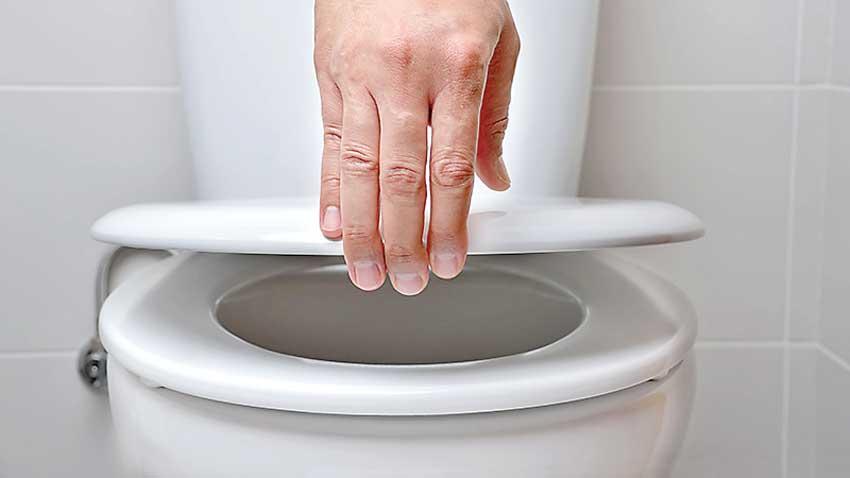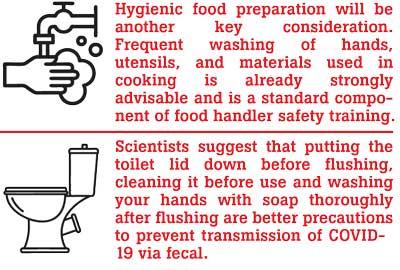26 Jun 2020 - {{hitsCtrl.values.hits}}

 The first COVID-19 infected patient reported from Wuhan, China on December 31, 2019. The virus spread rapidly to over 165 countries in approximately within 3 months. The primary routes of transmission of the coronavirus were respiratory droplets. Scientists have discovered that the novel coronavirus can remain in another human body and the individual may develop resistance to the corona virus with time. Recently, some countries are experiencing second waves of COVID-19 with some modifications in disease symptoms and the way of transmission. Other countries are pretty scared to have second wave of this pandemic. The COVID-19 outbreak has such massive mortality records.
The first COVID-19 infected patient reported from Wuhan, China on December 31, 2019. The virus spread rapidly to over 165 countries in approximately within 3 months. The primary routes of transmission of the coronavirus were respiratory droplets. Scientists have discovered that the novel coronavirus can remain in another human body and the individual may develop resistance to the corona virus with time. Recently, some countries are experiencing second waves of COVID-19 with some modifications in disease symptoms and the way of transmission. Other countries are pretty scared to have second wave of this pandemic. The COVID-19 outbreak has such massive mortality records.
Recent research studies reveal that the corona virus can remain in the human digestive tract and its transmission can occur through feces. Therefore, we have to pay more attention on personal hygiene in order to prevent the transmission of infection since a second wave of COVID-19 might develop into severe condition. This week’s Health Capsule is going to present a newly identified method of how the coronavirus infection spreads globally and what precautions we can take.
According to research findings, in addition to respiratory symptoms, a significant number of COVID-19 patients is suffering from gastrointestinal symptoms such as loss of appetite, nausea, vomiting and diarrhoea.
Pathophysiology of the virus
The entry of the virus to the host cell can take place through ACE-2 receptors, which are important regulators connected to intestinal inflammation. In addition to the ACE-2 receptor, successful virus entry requires transmembrane protease serine 2 (TMPRSS2) also which cleaves the S-protein of Corona virus on the cell membrane and enables viral fusion. ACE-2 and TMPRSS2 were found in the lung alveolar cells, esophageal epithelial cells and also in the absorptive enterocytes of ileum and colon.
The mechanisms postulated for causation of diarrhoea in COVID-19 infection are:
Research studies clearly depict that the gastrointestinal tract acts as a potent source of viral shedding. In addition to that, the virus has been shown to remain viable in aerosol from 03 hours and close to 72 hours on plastic and stainless steel surfaces. Some studies have proved that, samples collected from the surface of the toilet bowl, sink bowl, and door handle of the bathroom used by a fecal positive patient turned out to be positive before cleaning.
This feco-oral or “fecomucosal” route of transmission has a profound implication on the strategies needed to control the spread of the disease. The major reason for the spread of the Coronavirus from human to human, via the washroom, is the high viral load in the stool and its stability on regular surfaces. The generation of toilet fumes makes the virus a formidable agent.
Effects on the pancreas
Research has discovered that 17% of COVID-19 infected patients had pancreatic injury and it was associated with a higher incidence of anorexia and diarrhoea and more severe illness on admission. There are 03 possible explanations including ACE-2 receptors on pancreatic islets causing acute diabetes, cytokine storm, and drug-induced pancreatic injury.
Effects on the liver
Liver involvement has been reported in patients infected with COVID-19 and they may develop different degrees of liver dysfunction by presenting abnormal levels of alanine aminotransferase (ALT), Aspartate aminotransferase(AST) and slightly elevated gamma-glutamyltransferase (GGT) and bilirubin levels. However, the underlying mechanisms for hepatic injury inpatients with COVID-19 are still unclear. Studies have mentioned that liver damage might be directly caused by virus-induced structural changes in host cells which is the effect of SARS-CoV-2 that binds to the angiotensin-converting enzyme 2 (ACE2) receptor to enter its target cells. Moreover, immune-mediated inflammation might contribute to liver injury in patients suffering from COVID-19.
Suggestion to preserve public health
As mentioned in research studies, the Coronavirus can be transmitted through fecal contamination. Therefore, additional precautions are essential to prevent potential fecal transmission of COVID 19. Fecal–oral and waterborne transmission routes could be particularly problematic in areas with inadequate sanitation and limited access to uncontaminated pure drinking water.
According to the US Centers for Disease Control and Prevention (CDC), adequate chlorination of water is currently believed to be sufficient treatment for the inactivation of the virus. Moreover, the US Centres for Disease Control and Prevention recommend that workers at wastewater treatment plants should take standard precautions such as wearing personal protective equipment during processing of wastewater in order to prevent exposure to aerosolized sewage. Other than that the exposure to aerosolised sewage was prolonged by an inadequate bathroom floor drainage system that allowed for the formation of virus containing droplets, which are likely circulated further by the ventilation system in the room. Healthcare and laboratory staff is another possible target group for fecal transmission of COVID-19 virus. According to scientists, the strict preventive measures should be taken when handling stool or fecal samples from SARS-CoV-2 infected patients. Currently, the US Centers for Disease Control and Prevention recommends that virus isolation and cultures be handled in biosafety level 3 (BSL-3) settings, whereas routine diagnostic testing be conducted in a BSL-2 laboratory.
Hygienic food preparation will be another key consideration. Frequent washing of hands, utensils, and materials used in cooking is already strongly advisable and is a standard component of food handler safety training.
Furthermore, scientists suggest that putting the toilet lid down before flushing, cleaning it before use and washing your hands with soap thoroughly after flushing are better precautions to prevent transmission of COVID-19 via fecal.
There are conventional five factors for feco-oral transmission- including the fingers, flies, fields, fluids and food- the increasing of public awareness for better hygiene, safe food practices, unreceptive open elimination, and ensuring clean water practices which form the foundation for preventing the spread of this disease and need to be strictly implemented.
(The writer holds a MSc. Degree in Industrial and Environmental Chemistry from the University of Kelaniya and a BSC in Food Production and Technology Management from the
Wayamba University of Sri Lanka)
21 Dec 2024 5 hours ago
21 Dec 2024 7 hours ago
21 Dec 2024 21 Dec 2024
21 Dec 2024 21 Dec 2024
21 Dec 2024 21 Dec 2024